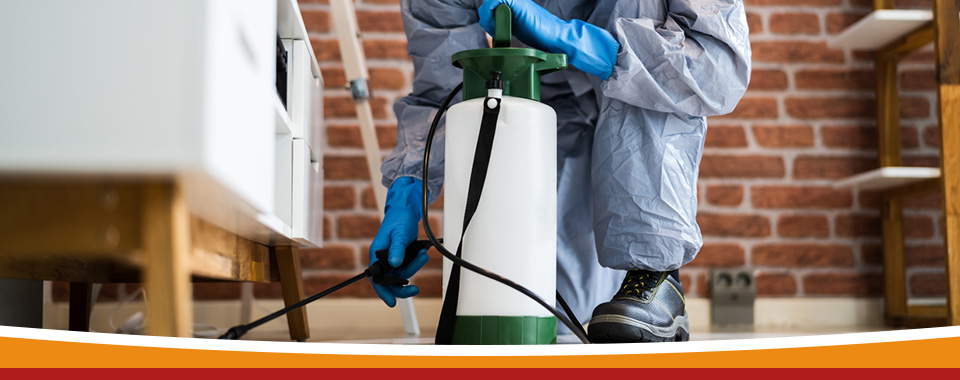Proven Bed Bug Heat Treatment: Remove Bed Bugs with Heat!
Proven Bed Bug Heat Treatment: Remove Bed Bugs with Heat!
Blog Article
Specialist Insect Control Techniques for Long-Term Outcomes
In the realm of pest control, attaining continual efficacy and lasting results calls for a careful approach that goes beyond mere extermination. Specialist parasite control methods encapsulate an extensive method that starts with a detailed assessment and evaluation, adhered to by accurate parasite identification to comprehend their behavior patterns. The application of Integrated Parasite Management (IPM) concepts, paired with eco-conscious treatments, develops the keystone of sustainable bug eradication. The real examination lies in the ongoing tracking and upkeep of the dealt with areas, guaranteeing a pest-free atmosphere for the direct future. By delving into the complexities of these strategies, a much deeper understanding of professional insect control techniques for withstanding results emerges.
Inspection and Assessment
Upon entering a residential property for bug control solutions, the preliminary step is a comprehensive evaluation and assessment to identify the level of the problem and figure out the most effective therapy strategy. Expert insect control service technicians are trained to meticulously check out the properties, trying to find indications of pest task such as droppings, chomp marks, nests, or any type of structural damages. They will also analyze the problems that may be attracting parasites, such as food sources, water leaks, or access points.

Pest Identification and Habits

Moreover, understanding the actions of the determined pest is crucial to executing reliable control steps. Recognizing where bugs nest, what they feed on, and their activity patterns can assist pest control professionals create strategies to eliminate them efficiently.
Integrated Bug Management (IPM)
Integrated Bug Management (IPM) methods incorporate several strategies to control and stop pest invasions in a lasting and environmentally pleasant fashion. bed bug heat treatment. By incorporating methods such as biological control, environment adjustment, modification of cultural methods, and using resistant ranges, IPM intends to decrease making use of chemical pesticides
One of the crucial concepts of IPM is the focus on prevention. This positive technique entails monitoring insect populations on a regular basis to detect any type of possible issues before they intensify. By determining bug troubles early on, pest control measures can be executed quickly and successfully.
Moreover, IPM advertises the usage of safe parasite control approaches whenever feasible. This can consist of using all-natural killers of the pests, introducing advantageous insects, or using pheromones to disrupt mating patterns. By reducing reliance on chemical pesticides, IPM not just shields the setting yet additionally assists preserve a balance in the community.
Environmentally-Friendly Treatments
Executing eco-conscious techniques in pest control procedures can properly resolve problems while focusing on environmental sustainability. Environmentally-friendly treatments concentrate on decreasing the effect of insect control methods on ecosystems, non-target microorganisms, and human wellness. These techniques typically involve making use of natural killers, such as ladybugs or nematodes, to regulate pest populaces, minimizing the need for chemical interventions. In addition, methods like habitat adjustment, such as changing moisture degrees or removing food resources, can assist deter parasites without the use of damaging substances.
One more trick aspect of environmentally-friendly therapies is using natural and biodegradable products that damage down quickly without leaving unsafe residues in the atmosphere. address Botanical insecticides stemmed from plants like chrysanthemums or neem offer efficient pest control while positioning marginal risk to non-target types. Furthermore, employing techniques like warmth treatments or pheromone catches can target details insects with precision, linked here lowering the overall environmental effect of parasite control practices.
Ongoing Tracking and Maintenance
Constant surveillance and upkeep are necessary parts of effective pest control management. Continuous tracking plays a crucial role in ensuring that insect problems are detected very early and taken care of immediately. Regular examinations by trained professionals are required to recognize any type of indications of insect activity, assess the effectiveness of previous therapies, and make changes to the parasite control strategy as needed. By keeping track of insect populations with time, parasite control professionals can track patterns, anticipate potential concerns, and carry out preventative steps to reduce the risk of future problems.
Along with surveillance, maintenance methods are essential for long-term bug control success. This consists of implementing proper cleanliness procedures to remove potential food and water sources for insects, sealing access indicate prevent pests from going into the facilities, and resolving any kind of structural issues that could help with bug invasions (Exterminator DC). By integrating continuous tracking and upkeep right into an incorporated bug monitoring approach, organizations can make useful source certain a pest-free setting and guard their residential or commercial property against expensive damage and health threats
Verdict
Finally, making use of specialist bug control methods such as complete assessment and evaluation, precise insect identification and understanding of their behavior, incorporated bug administration techniques, environmentally-friendly treatments, and ongoing monitoring and upkeep are necessary for attaining long-lasting cause pest control. By applying these approaches, individuals can efficiently take care of parasite invasions and maintain a pest-free setting in a sustainable manner.
Report this page